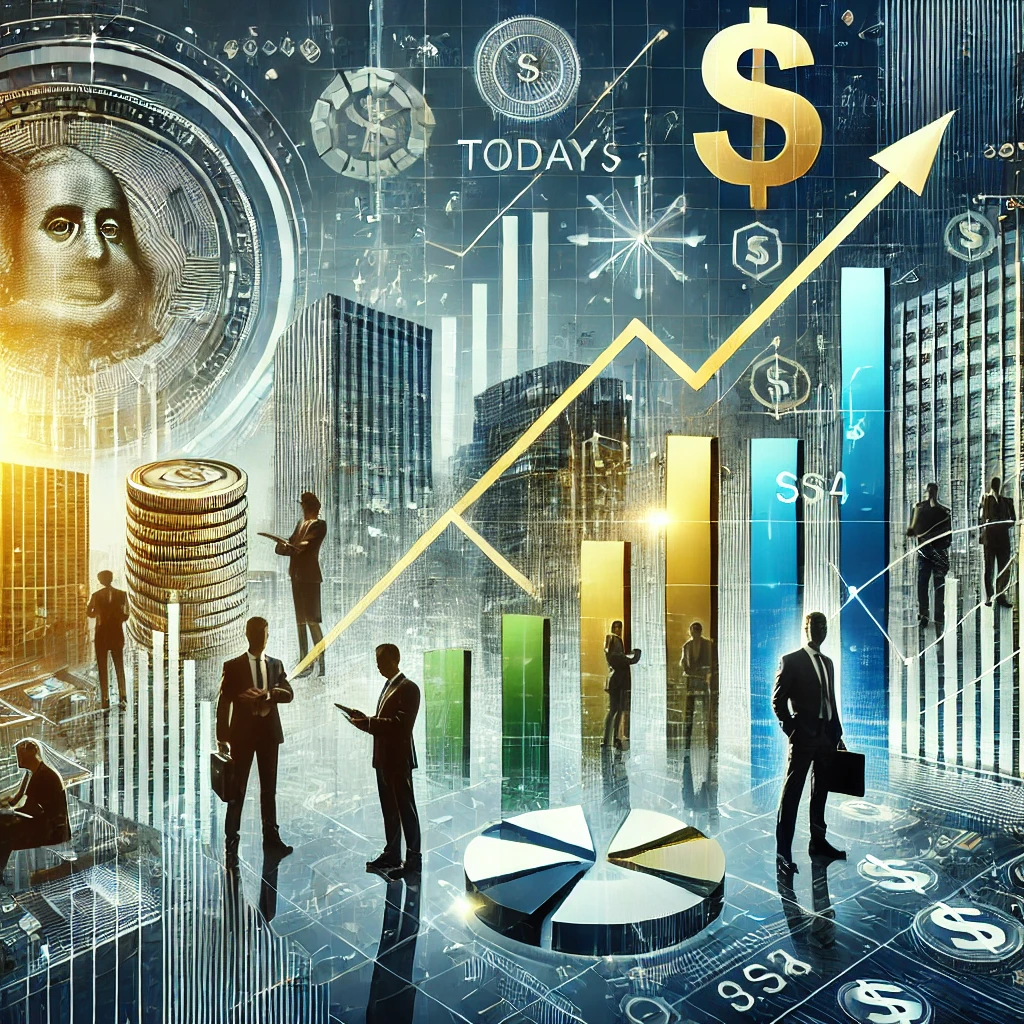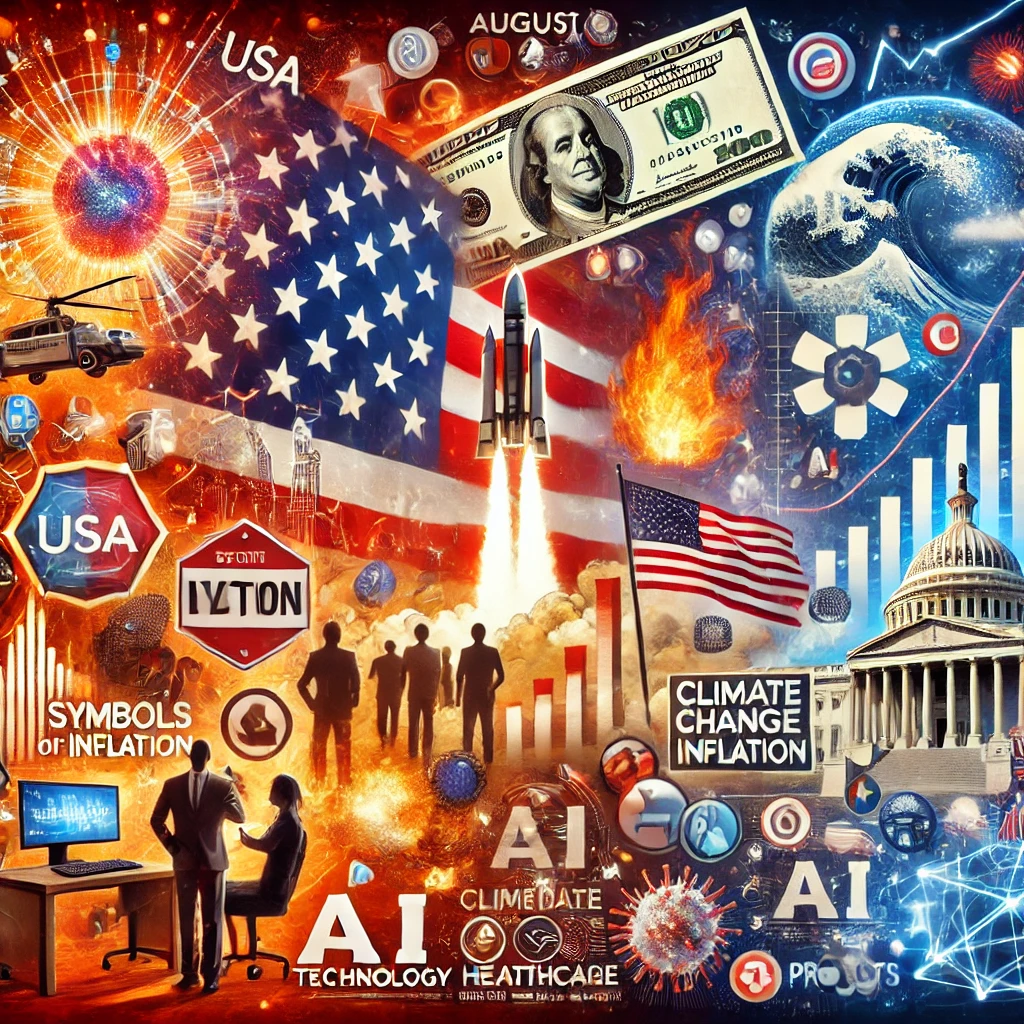On August 16, 2024, the economic and business landscape in the United States was marked by a series of significant developments, reflecting both the opportunities and challenges facing the nation. From inflation reaching a 40-year high to record investments in renewable energy, the day’s news highlighted the complex interplay of forces shaping the U.S. economy. As businesses grappled with rising costs and labor shortages, consumer spending remained resilient, demonstrating the underlying strength of the American economy. Meanwhile, the ongoing shift towards sustainable practices and technological innovation underscored the transformative changes underway in various sectors. This article delves into the top economic and business news of the day, providing insights into the trends and issues that will influence the future trajectory of the U.S. economy.

1. U.S. Inflation Rate Hits 40-Year High
The United States continues to grapple with rising inflation, reaching a 40-year high of 9.2% in July 2024. This marks a significant economic challenge as prices for essentials such as food, energy, and housing soar. The Federal Reserve has responded with a series of interest rate hikes aimed at curbing inflation, yet the impact on consumer purchasing power and overall economic growth remains a concern. Businesses are facing higher operational costs, which are being passed on to consumers, contributing to a decline in disposable income and consumer confidence. The continued upward pressure on prices has also led to increased speculation about the potential for a recession.
2. Major Automaker Announces Shift to 100% Electric Vehicles by 2030
In a groundbreaking move for the automotive industry, one of the United States’ leading automakers announced plans to transition its entire vehicle lineup to electric models by 2030. This decision reflects the growing consumer demand for sustainable transportation options and the increasing regulatory pressure to reduce carbon emissions. The automaker’s strategy includes significant investments in battery technology, charging infrastructure, and the development of new electric models. This shift is expected to create new opportunities within the electric vehicle (EV) supply chain while also posing challenges for traditional automotive workers who may need to reskill.
3. U.S. Labor Market Struggles Amidst Record Job Openings
The U.S. labor market is experiencing unprecedented conditions, with a record 12 million job openings as of August 2024. Despite the abundance of available jobs, many employers are struggling to fill positions, particularly in sectors such as healthcare, technology, and hospitality. This shortage is partly attributed to demographic shifts, changes in workforce expectations post-pandemic, and increased competition for skilled labor. The labor market’s tightness has led to wage inflation, with businesses offering higher salaries and enhanced benefits to attract talent. However, this situation also presents a risk of fueling further inflationary pressures, complicating the Federal Reserve’s efforts to stabilize the economy.
4. U.S. Trade Deficit Narrows as Exports Surge
The U.S. trade deficit narrowed in July 2024, driven by a surge in exports, particularly in technology, pharmaceuticals, and agricultural products. This marks a positive development for the U.S. economy, which has faced persistent trade imbalances in recent years. The increase in exports has been supported by a weaker U.S. dollar, making American goods more competitive abroad, and growing demand in key markets such as China and the European Union. While the reduction in the trade deficit is a welcome sign, analysts caution that ongoing trade tensions, particularly with China, could pose risks to future export growth.
5. Tech Companies Face Increased Scrutiny Over Data Privacy
Several leading U.S. technology companies are facing heightened scrutiny from regulators over data privacy practices. The Federal Trade Commission (FTC) and other regulatory bodies have initiated investigations into alleged violations of consumer privacy laws, focusing on how companies collect, store, and use personal data. This scrutiny comes amid broader concerns about the power and influence of tech giants, with lawmakers pushing for stronger regulations to protect consumer rights. In response, some companies have begun to implement more stringent data protection measures, although these efforts have done little to quell the growing public and regulatory pressure.
6. Renewable Energy Investments Reach Record Levels
Investment in renewable energy in the United States reached record levels in 2024, with over $500 billion allocated to solar, wind, and battery storage projects. This surge in investment is driven by federal and state policies aimed at reducing carbon emissions and transitioning to a more sustainable energy grid. The renewable energy sector is now one of the fastest-growing segments of the economy, creating thousands of new jobs and attracting significant interest from both domestic and international investors. However, the rapid growth of renewables also presents challenges, including the need for substantial upgrades to the nation’s energy infrastructure and the integration of intermittent renewable sources into the power grid.
7. U.S. Companies Embrace AI and Automation
American businesses are increasingly adopting artificial intelligence (AI) and automation technologies to enhance productivity and reduce operational costs. In 2024, investment in AI and automation reached new heights, with companies across various industries implementing these technologies to streamline processes, improve decision-making, and gain a competitive edge. While this trend is expected to drive economic growth, it also raises concerns about the potential displacement of workers and the need for reskilling programs to ensure that the workforce can adapt to the changing technological landscape.
8. Real Estate Market Shows Signs of Cooling
The U.S. real estate market, which has been red-hot in recent years, is beginning to show signs of cooling as interest rates rise and affordability issues weigh on potential buyers. Home sales have slowed, and price growth has moderated, particularly in high-demand urban areas. Despite this cooling, demand for housing remains strong, driven by demographic trends such as the millennial generation reaching peak homebuying age and ongoing shortages of housing supply. The market is also seeing increased interest in alternative housing models, such as multi-generational homes and co-living arrangements, as buyers seek more affordable and flexible living options.
9. U.S. Healthcare Industry Faces Financial Pressures
The U.S. healthcare industry is under financial strain, with rising costs and a severe shortage of healthcare workers exacerbating existing challenges. Hospitals and healthcare providers are facing increased operational costs due to inflation, higher wages, and supply chain disruptions. At the same time, a growing number of Americans are struggling to afford healthcare, leading to higher levels of unpaid medical bills and financial instability within the sector. These pressures are prompting calls for systemic reforms, including changes to insurance coverage, payment models, and the expansion of telehealth services to reduce costs and improve access to care.
10. Consumer Spending Remains Strong Despite Economic Uncertainty
Despite economic uncertainties, consumer spending in the U.S. remains robust, supported by a strong labor market and rising wages. Retail sales and e-commerce activity have continued to grow, particularly in sectors such as travel, entertainment, and technology. However, economists warn that this spending could be unsustainable if inflation remains high and interest rates continue to rise, potentially leading to a slowdown in economic growth. Businesses are closely monitoring consumer behavior, adjusting pricing strategies, and exploring new revenue streams to navigate the evolving economic landscape.
Read Also:
-

100 Trend News in the U.S. on September 14, 2024
-

Speak No Evil: The Essential Guide to Understanding the Phrase and Its Cultural Impact
-

The Ultimate Guide to South Carolina Football: Schedule, Rivalries, and Predictions
-

AR State vs Michigan: The Ultimate Guide to Michigan Wolverines vs Arkansas State Red Wolves Showdown
Conclusion
The economic and business landscape in the United States on August 16, 2024, reflects a mix of opportunities and challenges. While sectors such as technology, renewable energy, and consumer goods continue to thrive, inflationary pressures, labor shortages, and regulatory scrutiny present significant risks. As businesses and policymakers navigate these complexities, the decisions made today will have far-reaching implications for the future of the U.S. economy. Staying informed and agile will be key to success in this dynamic environment.
